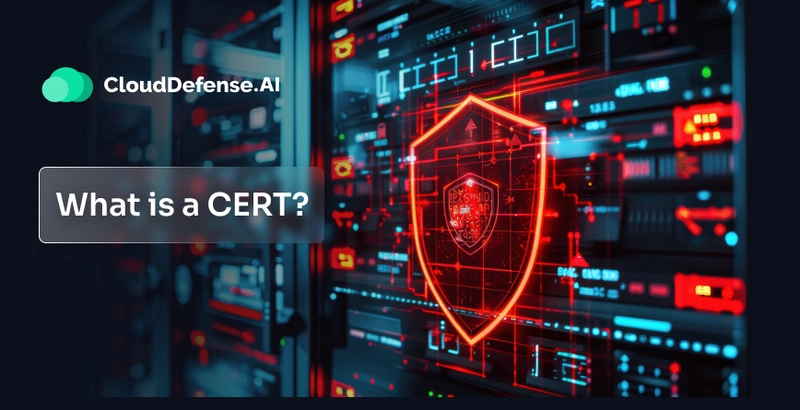What is a CERT (Computer Emergency Response Team)?
In a world where cyber threats are more relentless and sophisticated than ever, organizations need more than antivirus software to stay safe—they need a dedicated rapid-response team. That’s where Computer Emergency Response Teams (CERTs) come in. Acting as the digital first responders, CERTs are essential to defending sensitive data, maintaining uptime, and neutralizing threats across sectors. CERT Defined: What Do They Do? A CERT is a group of cybersecurity professionals dedicated to detecting, analyzing, and responding to cybersecurity incidents. Whether it’s a phishing campaign, a ransomware outbreak, or a zero-day exploit, CERTs serve as the central force coordinating technical investigations and recovery efforts. Their responsibilities include: Incident response and recovery Threat detection and monitoring Security awareness training Compliance support Infrastructure protection Collaboration with law enforcement and peer networks CERTs don’t just react—they prepare. Through simulations, policy development, and continuous monitoring, they help organizations reduce attack surfaces and respond more intelligently to cyber risks. How CERTs Operate in Practice When an attack is suspected, the CERT takes charge by validating the incident, collecting evidence, determining the threat vector, and working alongside IT teams and Security Operations Centers (SOCs). They deploy specialized tools to isolate the threat, contain the damage, and restore systems. Once stability is restored, CERTs analyze the event to offer insights and hardening strategies—such as patching, identity access control improvements, or adopting threat intelligence platforms like CloudDefense.AI. Choosing a Reliable CERT Provider If you're outsourcing your cybersecurity, selecting the right CERT provider is critical. Look for vendors with: Fast incident response capabilities Advanced detection tools and analytics Flexible service offerings tailored to your environment Support for regulatory and industry compliance Strong communication and reporting practices Providers who also deliver ongoing training and proactive monitoring offer the most value. A Brief History of CERTs CERTs were born from necessity. Following the Morris Worm incident in 1988, which disrupted early internet infrastructure, the U.S. government funded the creation of the first CERT at Carnegie Mellon University. Since then, these teams have become a global standard in cybersecurity readiness, embedded in government agencies, enterprises, and service providers alike. Wrapping Up As cyberattacks grow more targeted and damaging, CERTs are no longer optional—they’re indispensable. These teams provide not only emergency intervention but also long-term security strategy. Whether in-house or outsourced, having a CERT means being prepared for the unpredictable. To stay ahead of emerging threats, consider working with a solution provider like CloudDefense.AI—offering intelligent, integrated support for modern incident response.


In a world where cyber threats are more relentless and sophisticated than ever, organizations need more than antivirus software to stay safe—they need a dedicated rapid-response team. That’s where Computer Emergency Response Teams (CERTs) come in. Acting as the digital first responders, CERTs are essential to defending sensitive data, maintaining uptime, and neutralizing threats across sectors.
CERT Defined: What Do They Do?
A CERT is a group of cybersecurity professionals dedicated to detecting, analyzing, and responding to cybersecurity incidents. Whether it’s a phishing campaign, a ransomware outbreak, or a zero-day exploit, CERTs serve as the central force coordinating technical investigations and recovery efforts.
Their responsibilities include:
- Incident response and recovery
- Threat detection and monitoring
- Security awareness training
- Compliance support
- Infrastructure protection
- Collaboration with law enforcement and peer networks
CERTs don’t just react—they prepare. Through simulations, policy development, and continuous monitoring, they help organizations reduce attack surfaces and respond more intelligently to cyber risks.
How CERTs Operate in Practice
When an attack is suspected, the CERT takes charge by validating the incident, collecting evidence, determining the threat vector, and working alongside IT teams and Security Operations Centers (SOCs). They deploy specialized tools to isolate the threat, contain the damage, and restore systems.
Once stability is restored, CERTs analyze the event to offer insights and hardening strategies—such as patching, identity access control improvements, or adopting threat intelligence platforms like CloudDefense.AI.
Choosing a Reliable CERT Provider
If you're outsourcing your cybersecurity, selecting the right CERT provider is critical. Look for vendors with:
- Fast incident response capabilities
- Advanced detection tools and analytics
- Flexible service offerings tailored to your environment
- Support for regulatory and industry compliance
- Strong communication and reporting practices
Providers who also deliver ongoing training and proactive monitoring offer the most value.
A Brief History of CERTs
CERTs were born from necessity. Following the Morris Worm incident in 1988, which disrupted early internet infrastructure, the U.S. government funded the creation of the first CERT at Carnegie Mellon University. Since then, these teams have become a global standard in cybersecurity readiness, embedded in government agencies, enterprises, and service providers alike.
Wrapping Up
As cyberattacks grow more targeted and damaging, CERTs are no longer optional—they’re indispensable. These teams provide not only emergency intervention but also long-term security strategy. Whether in-house or outsourced, having a CERT means being prepared for the unpredictable.
To stay ahead of emerging threats, consider working with a solution provider like CloudDefense.AI—offering intelligent, integrated support for modern incident response.









































































































































































![[The AI Show Episode 146]: Rise of “AI-First” Companies, AI Job Disruption, GPT-4o Update Gets Rolled Back, How Big Consulting Firms Use AI, and Meta AI App](https://www.marketingaiinstitute.com/hubfs/ep%20146%20cover.png)


























































































































![[DEALS] The Premium Python Programming PCEP Certification Prep Bundle (67% off) & Other Deals Up To 98% Off – Offers End Soon!](https://www.javacodegeeks.com/wp-content/uploads/2012/12/jcg-logo.jpg)














































































































































_Aleksey_Funtap_Alamy.jpg?width=1280&auto=webp&quality=80&disable=upscale#)
_Sergey_Tarasov_Alamy.jpg?width=1280&auto=webp&quality=80&disable=upscale#)











































































































![Apple Foldable iPhone to Feature New Display Tech, 19% Thinner Panel [Rumor]](https://www.iclarified.com/images/news/97271/97271/97271-640.jpg)
![Apple Developing New Chips for Smart Glasses, Macs, AI Servers [Report]](https://www.iclarified.com/images/news/97269/97269/97269-640.jpg)
![Apple Shares New Mother's Day Ad: 'A Gift for Mom' [Video]](https://www.iclarified.com/images/news/97267/97267/97267-640.jpg)
![Apple Shares Official Trailer for 'Stick' Starring Owen Wilson [Video]](https://www.iclarified.com/images/news/97264/97264/97264-640.jpg)







































































































